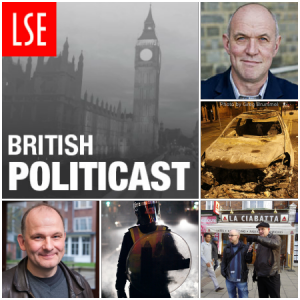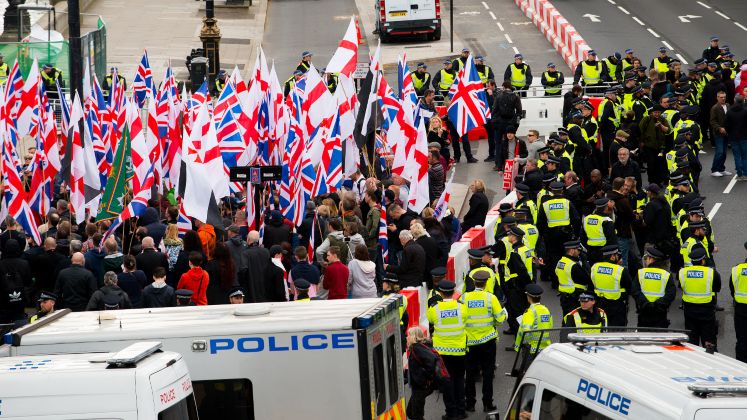 In the first episode of the LSE British Politicast, we take a closer look at the Riots of 2011. This podcast looks back on the riots, presenting sociological and criminological perspectives on why they happened and what, if anything, can be learned from them. Tim Newburn, Professor of Criminology and Social Policy at the LSE, talks about his award winning research project Reading the Riots, which aimed to examine in detail at who was involved, the extent and nature of their participation, and their accounts of what prompted or motivated their actions. Les Back, Professor of Sociology at Goldsmith’s College walks us through Catford, London, which along with the surrounding area of Lewisham, caught the attention of the national media when its multiple shops were raided and destroyed in the riots. He notes how today’s disaffected youth experience an “intense sense of the present”.
In the first episode of the LSE British Politicast, we take a closer look at the Riots of 2011. This podcast looks back on the riots, presenting sociological and criminological perspectives on why they happened and what, if anything, can be learned from them. Tim Newburn, Professor of Criminology and Social Policy at the LSE, talks about his award winning research project Reading the Riots, which aimed to examine in detail at who was involved, the extent and nature of their participation, and their accounts of what prompted or motivated their actions. Les Back, Professor of Sociology at Goldsmith’s College walks us through Catford, London, which along with the surrounding area of Lewisham, caught the attention of the national media when its multiple shops were raided and destroyed in the riots. He notes how today’s disaffected youth experience an “intense sense of the present”.
[jwplayer mediaid=”35746″]
Anatomy of the Catford Riots is an interactive Google Map with links to slideshows and extra content from Les Back’s interview as well as a collection of videos taken during the riots on 8 August 2011.








The flash player doesn’t work for me. Here is the direct dowload link, for everyone who has the same problem:
media.rawvoice.com/britishPoliticsAndPolicyBlog/richmedia.lse.ac.uk/britishPoliticsAndPolicyBlog/20130315_1200_politicast_theRiots.mp3
Sad, interesting and useful to hear about the dislocation and marginalization of some young people in society. I think the point referring to difficulties with “participating in public and political conversations” (Tim Newburn 06.00) is of prime importance. The “extraordinary reluctance of government to engage with the possibility to even partially open public conversation about these things” needs addressing. Citizens urgently need reciprocal, responsive dialogue with their elected representatives, the criminal justice system and ‘narrative leaders’ in press and media if these institutions are to retain their legitimacy.
Tim Newburn provides an excellent overview of the familiar story of riot with a new intensified consumer twist. However,Tim’s analysis of the responses by Government misses the Home Office’s assumptions about gangs. The subsequent Ending Gang and Youth Violence Strategy claimed 1 in 5 rioters were known gang members, in effect the riots became the vehicle for policy to address gang violence. The Government responses to the riots have arguably lacked substance and may be at best misguided. However what appears to be more ill informed is the subsequent short term approach to gangs which pump primes local authorities to encourage a more strategic approach. This course of non action may well be creating more local bureaucratic hurdles rather than promoting the national and neighbourhood interventions needed.